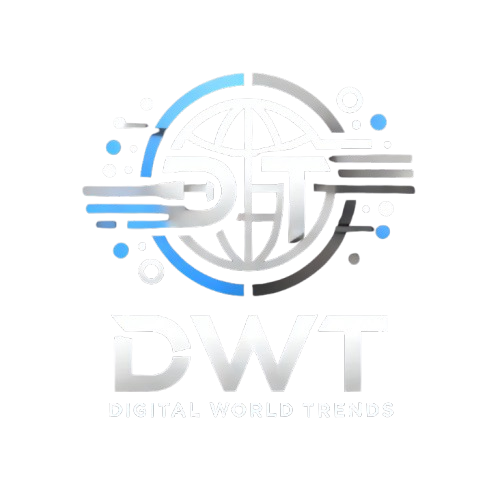Digital advertising is at the forefront of the marketing landscape, continuously evolving with new technologies and changing consumer behaviors. As the industry advances, marketers are focusing on data-driven insights, personalization, and innovative formats to engage customers effectively. This blog delves into the trends shaping digital advertising, and predictions for the future, and includes a case study showcasing how brands are adapting to stay ahead.
Why Understanding the Future of Digital Advertising Matters
Staying updated on emerging trends in digital advertising is crucial for brands that want to remain competitive, reach wider audiences, and provide personalized experiences. As new tools and technologies reshape the advertising landscape, it’s more important than ever for businesses to adapt and innovate.
Top Digital Advertising Trends to Watch
1. Artificial Intelligence (AI) and Machine Learning
AI is transforming digital advertising by enhancing targeting, automating processes, and improving customer engagement. Machine learning algorithms can analyze data to predict customer behavior, enabling more personalized and effective ad campaigns.
Key AI Applications in Advertising:
- Predictive Analytics: Helps forecast customer buying behavior and tailors ads accordingly.
- Chatbots: Enhance customer service on platforms like Facebook Messenger, interacting with users in real time.
- Programmatic Advertising: Uses AI to automate ad buying, ensuring the right ad is shown to the right user at the right time.
Prediction: By 2025, AI-driven advertising could account for over 80% of all digital advertising. With advancements in AI, marketers will gain deeper insights and achieve unprecedented levels of personalization.
2. Privacy-First Advertising and Data Transparency
With the rise in privacy laws like GDPR and CCPA, digital advertising is evolving to put data privacy at the forefront. Consumers are increasingly aware of how their data is used, and they’re demanding transparency.
Key Trends:
- Cookieless Future: Google’s plan to phase out third-party cookies by 2024 has prompted marketers to explore first-party data and contextual advertising.
- Data Clean Rooms: Brands are adopting clean rooms to securely analyze user data without violating privacy.
Prediction: Expect a shift toward greater reliance on first-party data collection methods, such as loyalty programs, surveys, and direct interactions with customers. Brands that prioritize privacy will build stronger trust and loyalty with their audiences.
3. Rise of Video and Interactive Content
Video remains one of the most engaging content forms, with platforms like YouTube, TikTok, and Instagram pushing short-form videos. Interactive content, such as polls, quizzes, and shoppable ads, provides a more immersive experience, which leads to higher engagement rates.
Key Trends:
- Short-Form Video Dominance: Platforms like TikTok and Instagram Reels have made short, impactful videos a must-have.
- Shoppable Content: Interactive videos that allow users to buy products directly through the ad are revolutionizing e-commerce.
Prediction: As users continue to consume content on the go, short-form, interactive videos will dominate digital advertising. Brands investing in shoppable content and short video formats will see increased engagement and sales.
4. Voice Search and Voice Ads
Voice search is becoming a popular way for consumers to find information, with 41% of adults using voice search daily. Voice ads are an untapped opportunity for brands to engage users on smart devices and home assistants like Amazon Alexa and Google Home.
Key Trends:
- Voice Search Optimization: Adapting content to cater to conversational search queries.
- Voice Ads: Targeting consumers on smart speakers with personalized audio ads.
Prediction: As smart devices become more integrated into households, voice ads will play a larger role in digital marketing. Brands that invest in voice search optimization and voice ads will have a unique opportunity to connect with consumers in an emerging space.
5. Metaverse Advertising
The metaverse—a virtual world where users can interact with digital spaces and each other—is set to revolutionize advertising. Brands are creating immersive experiences within the metaverse to engage with users in an entirely new way.
Key Trends:
- Virtual Reality (VR) Ads: Brands are using VR to create immersive, interactive ads that allow users to “experience” their products.
- Augmented Reality (AR) Shopping: Virtual try-ons and AR product demos give users a realistic sense of the product before they buy it.
Prediction: As the metaverse expands, more brands will explore VR and AR advertising opportunities. By 2025, metaverse-related advertising could account for a significant share of ad spending in certain sectors, such as fashion and gaming.
6. Personalization Through Big Data
Data-driven personalization is already a staple in digital advertising, but advancements in data collection and analytics are taking it to new levels. Marketers can now segment audiences more granularly and serve them highly targeted ads.
Key Trends:
- Hyper-Personalization: Using data points like purchase history, browsing behavior, and demographics to deliver ultra-specific ads.
- Predictive Personalization: AI-driven personalization that anticipates user needs and preferences.
Prediction: Hyper-personalized advertising will become the standard, with brands using data to create ads that feel highly relevant to individual users. Those who can master personalized ad experiences will see higher engagement and conversions.
Case Study: How a Retail Brand Adapted to Emerging Trends in Digital Advertising
Background
Eco Essentials, a mid-sized e-commerce brand specializing in eco-friendly products, faced stagnant sales despite having a solid social media presence. Recognizing the need to adapt to changing consumer behaviors and technological advancements, Eco Essentials decided to overhaul its digital advertising strategy.
Goals and Challenges
Goals:
- Increase brand awareness among eco-conscious consumers.
- Improve engagement and click-through rates on social media ads.
- Boost conversions by enhancing personalization and leveraging data-driven insights.
Challenges:
- Lack of personalized ads.
- Limited data on customer behaviors and preferences.
- Increasing competition from both established and emerging eco-friendly brands.
Solution: Integrating Future-Focused Advertising Strategies
Eco Essentials partnered with a digital marketing agency to incorporate emerging trends into their strategy.
- Adopting Programmatic and AI-Driven Advertising: By using AI algorithms, Eco Essentials automated ad targeting, allowing them to reach specific demographics interested in eco-friendly products. They used predictive analytics to identify high-intent audiences, optimizing their ad spend and increasing engagement.
- Investing in Video and Shoppable Ads: Eco Essentials created a series of short-form videos showcasing product benefits and how-tos for their Instagram and TikTok channels. Each video included shoppable tags, enabling users to purchase directly from the video. This increased engagement and shortened the customer journey, leading to a 25% increase in conversions.
- Utilizing First-Party Data and Personalization: To address the cookieless future, Eco Essentials focused on collecting first-party data through email subscriptions and website interactions. They personalized ads based on user preferences and purchase history, creating tailored messages that resonated with individual users. Personalized product recommendations alone contributed to a 30% boost in sales.
- Experimenting with AR for Virtual Try-Ons: Eco Essentials introduced augmented reality on their mobile site, allowing users to virtually try on accessories and see products in a virtual room setting. This not only enhanced the user experience but also improved product engagement, with users spending 2.5 times longer on pages with AR features.
Results
After implementing these strategies, Eco Essentials saw the following results within six months:
- 40% increase in brand awareness, with an uptick in social media followers and website traffic.
- 25% improvement in engagement rates on ads featuring shoppable tags and interactive content.
- 30% rise in conversions from personalized ads and targeted recommendations.
- Higher customer retention due to engaging, immersive experiences like AR and shoppable videos.
Conclusion of Case Study
Eco Essentials’ success shows how a brand can leverage emerging digital advertising trends to adapt to a changing environment. By investing in AI, personalization, video content, and immersive experiences, they were able to increase engagement, drive conversions, and foster customer loyalty.
Preparing for the Future of Digital Advertising
The digital advertising landscape is becoming more sophisticated, driven by AI, privacy-first advertising, interactive content, and new platforms like the metaverse. Brands that want to stay competitive should consider adopting these strategies now, experimenting with different formats, and continuously analyzing results.
Key Takeaways:
- Stay Agile: Trends are constantly evolving, so keep your strategy flexible.
- Leverage Data Responsibly: With privacy concerns at the forefront, use first-party data and transparency to build trust.
- Invest in Content: Engaging, interactive content will be essential for capturing attention.
- Prioritize Personalization: Data-driven personalization leads to higher engagement and improved customer experiences.
By proactively adapting to these trends, businesses can create a digital advertising strategy that not only meets current consumer expectations but also positions them for success in the ever-changing digital world. The brands that remain curious, innovative, and customer-focused will ultimately be the ones that thrive.

